16 Genius and Stunning Ways to Organize Your Books

Whether your commitment to reading is steadfast or, um, aspirational, chances are you have at least a couple paperbacks lying around that could use some organization. Yes, the first step is to follow Marie Kondo’s lead and say goodbye to every tome you’ve been holding on to out of guilt or obligation. No matter what your snobby literary friend says, you don’t have to read that Knausgaard, and people won’t think less of you if you don’t own the old classics.
Then, once you’re surrounded solely by books you love and actually want to read and reread until the end of time, it’ll be that much easier to organize them in any of the following genius ways.
1
By color (the aesthetic approach)
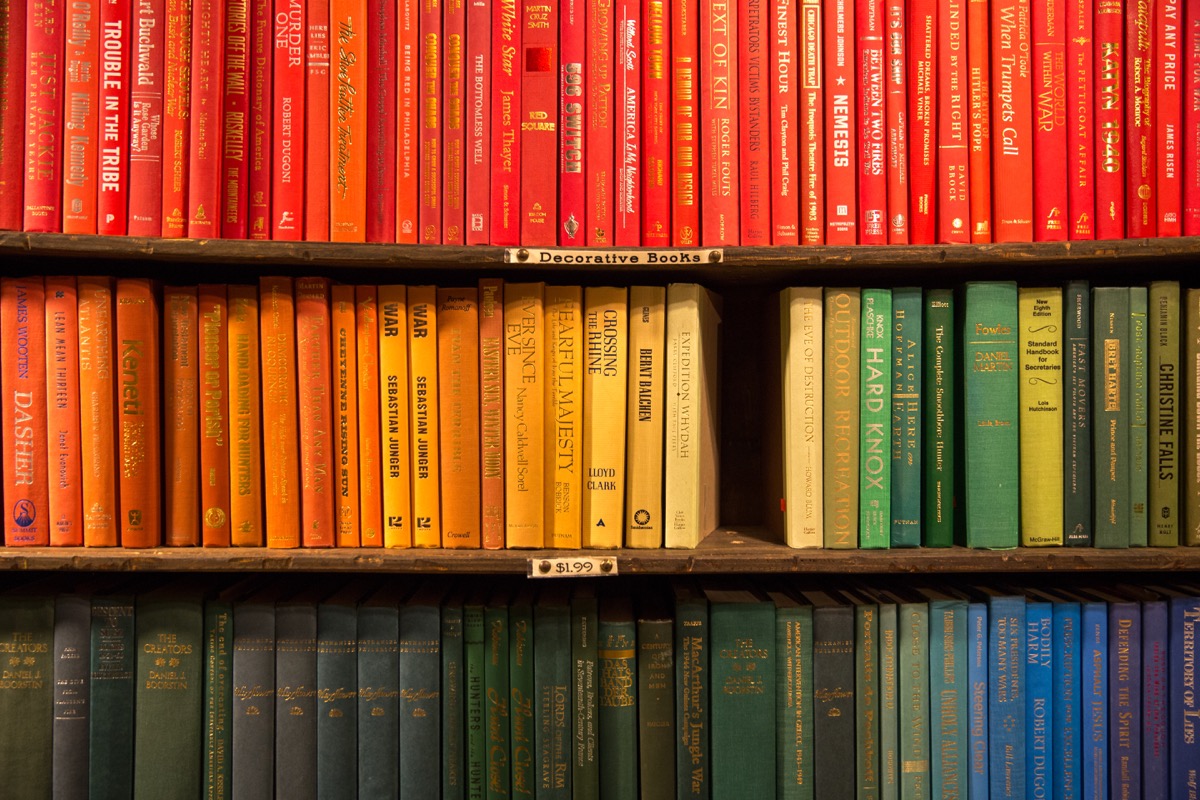
The most popular method among “bookstagrammers” (people who run Instagrams devoted to books) is organizing by color. This is definitely the most visually stunning method out there, allowing some gorgeous sweeps of different hues that are ridiculously pleasing to the eye.
Book Riot’s Tracy Shapley says that “there are a lot of interesting options within the color-organizing category,” so you could even arrange them “into some type of pattern within the color coding, or actually covering your books with wrapping paper so that different sections are clear.” Once you get the color coding worked out, however, if can be difficult to add new books to your collection—so it’s best to best reserve a shelf for the books who are late to the party.
2
By genre (the classic approach)
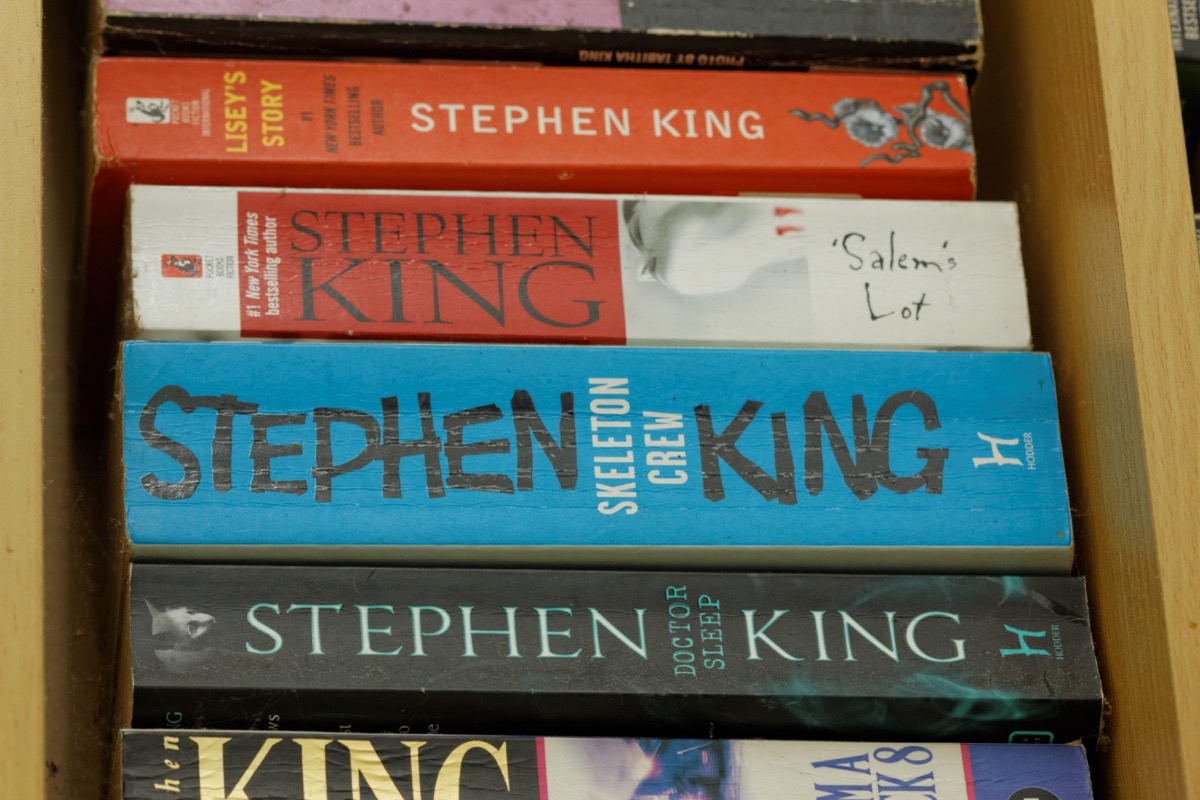
Perhaps the most popular non-visual method of organizing books has the reader place books of the same genre together. It’s genius because titles can be tough to remember, but if you can just recall whether your book had an elf or not, there’s a good bet you’ll find what you’re looking for. Your literary fiction goes with other literary fiction, your science fiction near your fantasy, your poetry next to other poets, your biographies next to your memoirs, and so on. Shapley recommends this option: “If you’re an equal opportunity reader and have books that cover a wealth of genres, then you may want to arrange them as such.”
But, of course, there are complications if authors span genres. Would Kurt Vonnegut be literary fiction, or science fiction? Does your old copy of Harry Potter live in fantasy, or children’s literature? These questions could make for some serious soul-searching, if you have the time.
3
By fiction vs. nonfiction (the effortless approach)
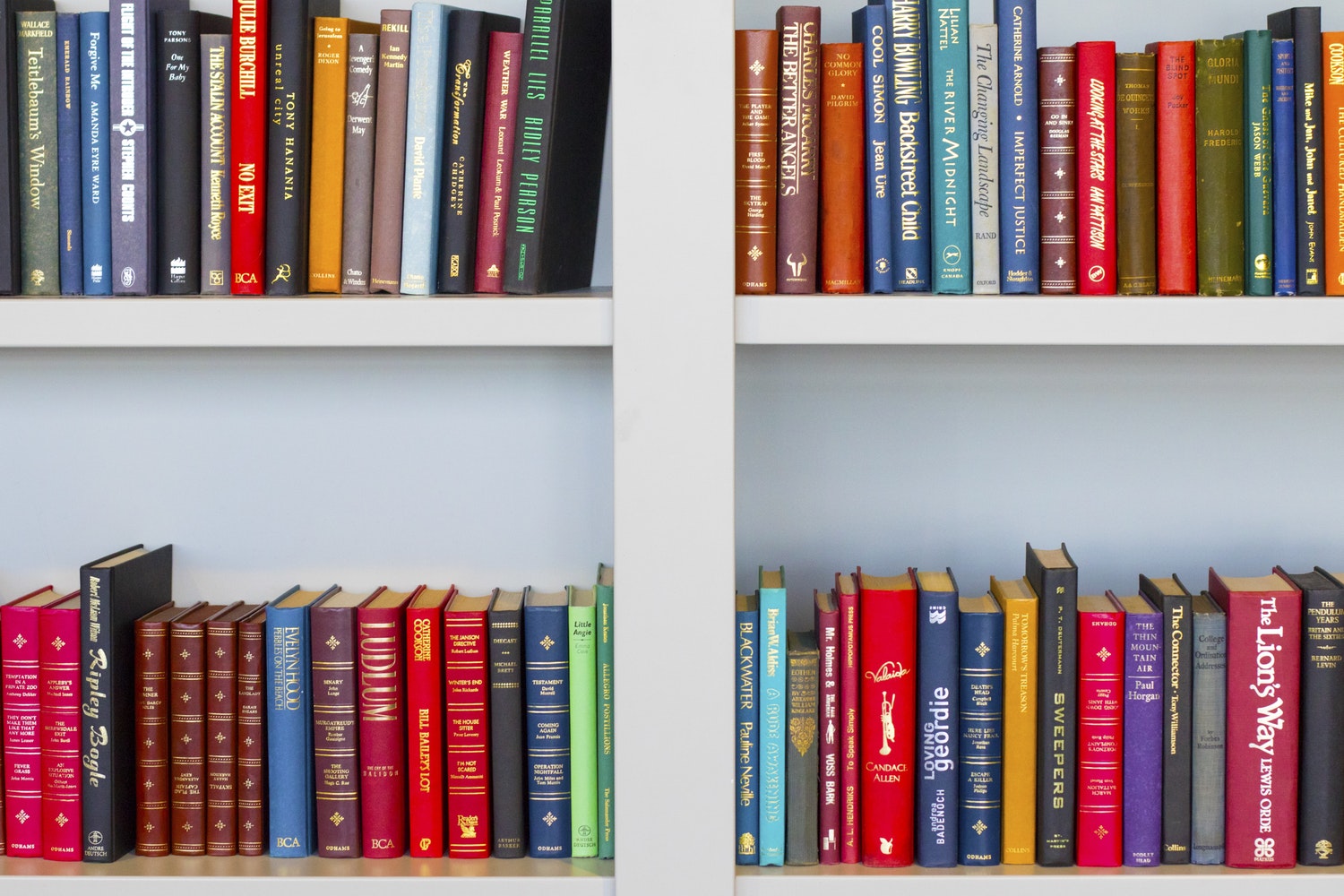
Arguably the easiest way of organizing your books is two split them into two groups: fiction and nonfiction. It’s genius in its simplicity. Just separate your fiction from your nonfiction, and go from there. Feel free to then organize by size, color, genre, or publication date.
4
Shaped shelves (the artsy approach)

If you’re on a home redesign, try investing in some uniquely shaped shelves to help you organize your books. Bonus points if you can pair the topics of your books with the shelves they live in; a tree-shaped shelf should hold your ecological or nature books, or a shelf shaped like the United States can hold your travel and history books.
5
By subject/topic (the “don’t judge a book by its cover” approach)
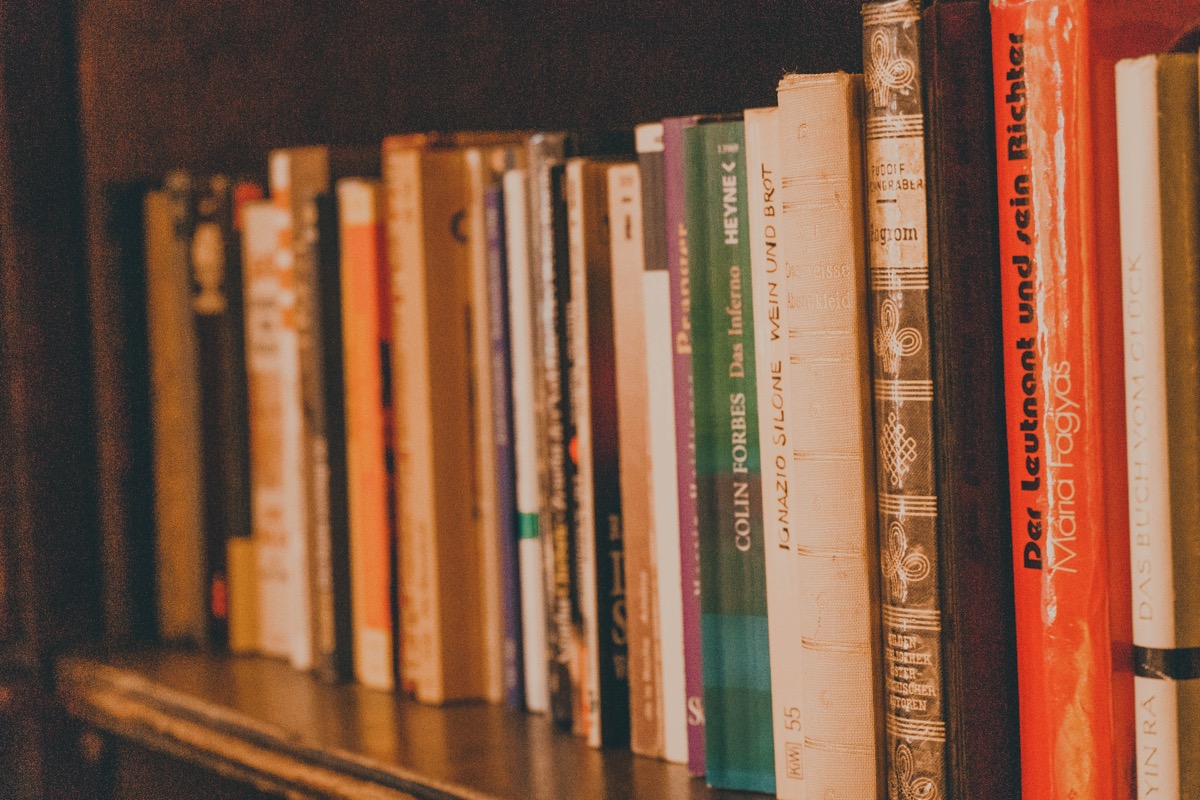
Similarly appealing to the readers who believe that it’s what’s inside that counts is the method of organizing books based on their subject matter or topic. This could ostensibly have you mixing up fiction and nonfiction, with some historical fiction needing a place alongside a clinical account of the Victorian era. But it’s a solid option for those who have a lot of nonfiction—or for those who want a visual timeline to remind them of the history that interests them.
6
Chronologically (the nerdy approach)
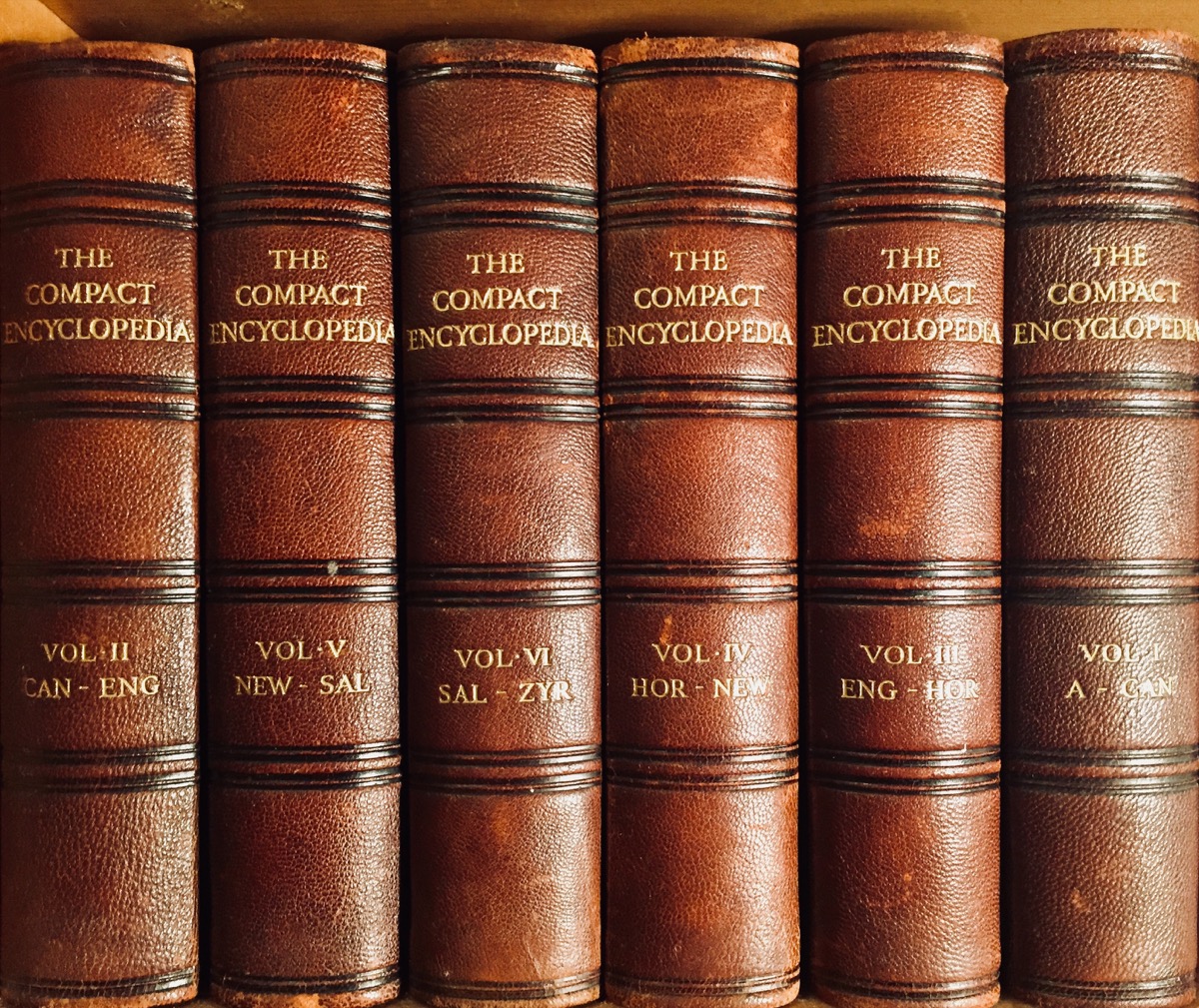
For the intensely historically minded folk out there, organize your books not just by time period but chronologically, by publication date—or even by the time period the author wrote in. You’d have to know a lot about the books you own for this method, or you risk getting as confused as any dinner guests you entertain.
Writing for The Millions, Hannah Gersen admits “it’s kind of a pretentious way to shelve your collection,” but putting her shelves in order helps her remember history, and it has the added bonus of leaving plenty of room at the end of her shelf for her most recently published acquisitions.
7
Alphabetically (the librarian approach)
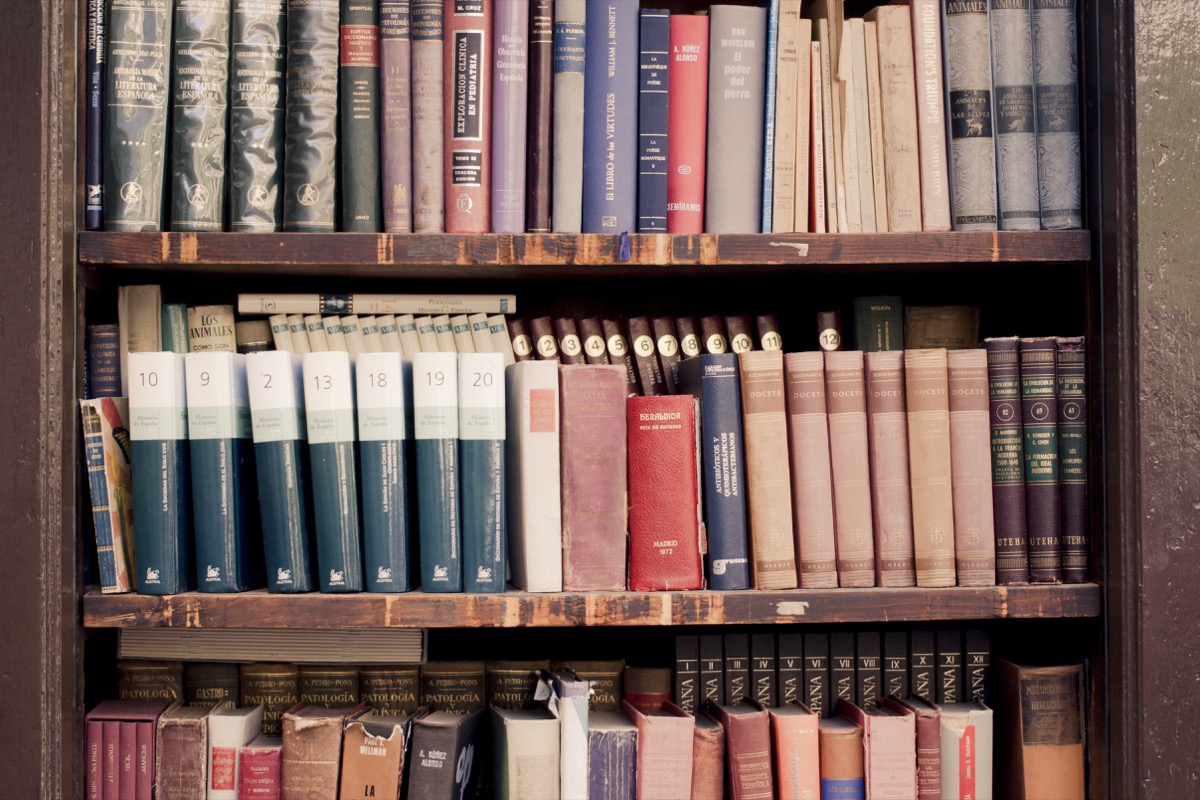
For the true sticklers, there’s really only one way to organize books: alphabetically. It could be fun to see all genres and topics mixed together based on an (often arbitrary) title they have been given. But do you shelve all the titles that start with “The” together, or tack to the iTunes organizational approach and start with the second word?
8
By author (the creator approach)
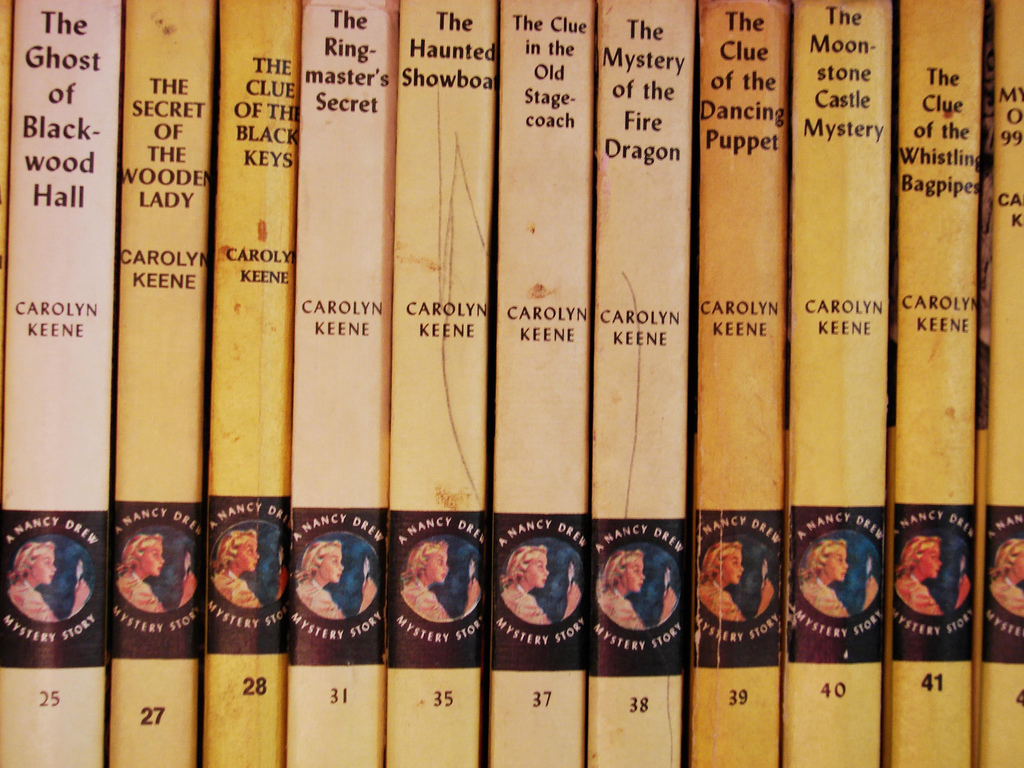
Shelving your books by author works especially well if you have favorite authors that you collect, or at least try to read most of what they’ve published. Shelve alphabetically by author’s last name, or group authors of certain genres together for a thematic combo approach.
9
By height and size (the measured approach)
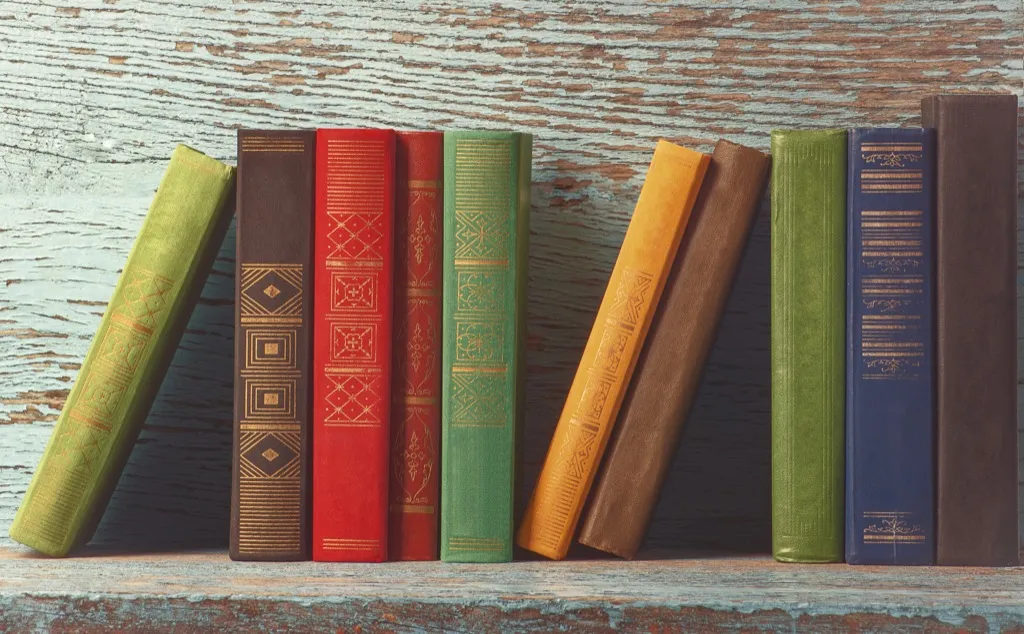
Another visual organization method is grouping them by height and size. This is particularly helpful if you’re dealing with shelves (or books!) of different heights; putting the books that are similar shapes with each other can help maximize your use of your (perhaps limited) space. A fun hack for this category is the aesthetic choice to stack books both vertically and horizontally, to mix up your shelf usage. This trick also has the benefit of allowing you to use more books as bookends, making them useful as well as beautiful.
10
By format (the hardcover vs. paperback approach)

An easy option is to organize your books by format—namely, by hardcover or paperback. This could then be broken down into first editions your used copies, if you’re feeling choosy. Or in a more general sense you could organize the books based on the condition of their covers. (Though if you always try to not judge a book by its cover, this could prove irksome.)
11
By preference (the personal approach)
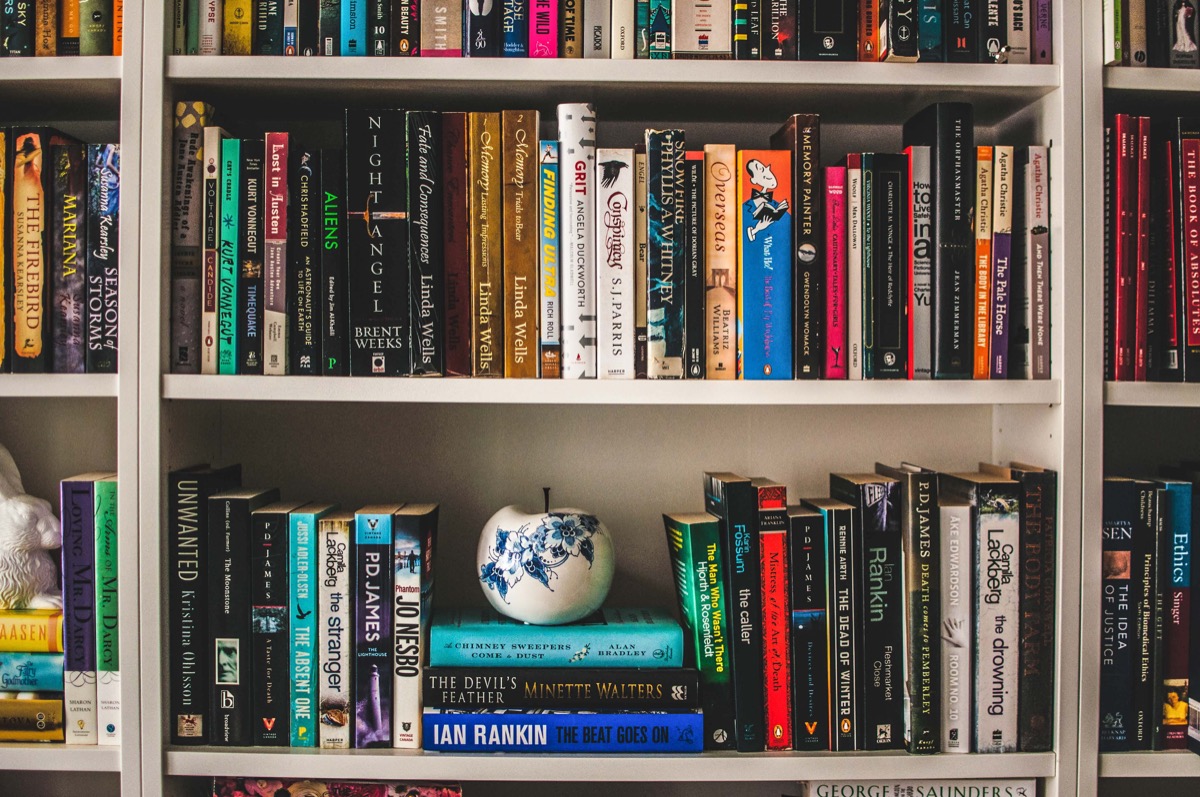
A more simple approach is to simply organize your books based on how much you like them. The books you feel obligated to keep can go on the bottom shelf where no one can see them, and you should put your prized reads at eye-level, or on a side table for easy perusal. This method makes it less easy for guests to find particular books, sure, but it’ll be more personal and important to you.
12
Autobiographically (the extremely personal approach)

This one could be tricky to figure out, but it’s a fun exercise if you’re feeling nostalgic. If you have strong memories of reading specific books at specific moments in your life, try organizing your titles autobiographically. If you think fondly back to your British lit days in college, or you always remember the classics of your childhood, this might be the method for you.
An alternative to this is to group your books based on how they make you feel—the funny essay collections or satire that always bring a smile to your face should go together, and the surprising tearjerkers have their own section. This way you’ll always be able to grab the book that you’re in the mood for.
13
As furniture (the functional approach)

If you have a ton of extra books that don’t quite fit on the shelves—or if you find yourself with a dearth of shelves—try incorporating your books into your everyday life as furniture.
As long as they have a sturdy base, books can make great side tables. The thickest tomes, too, can be great as a way to elevate your desktop monitor so you don’t strain your neck. And if you like to live life on the edge, you could even try using your book as a coaster—though that’s not recommended, as the risk for water or heat damage is far too high. (Invest in some cork coasters, instead.)
14
Backwards (the cheat approach)
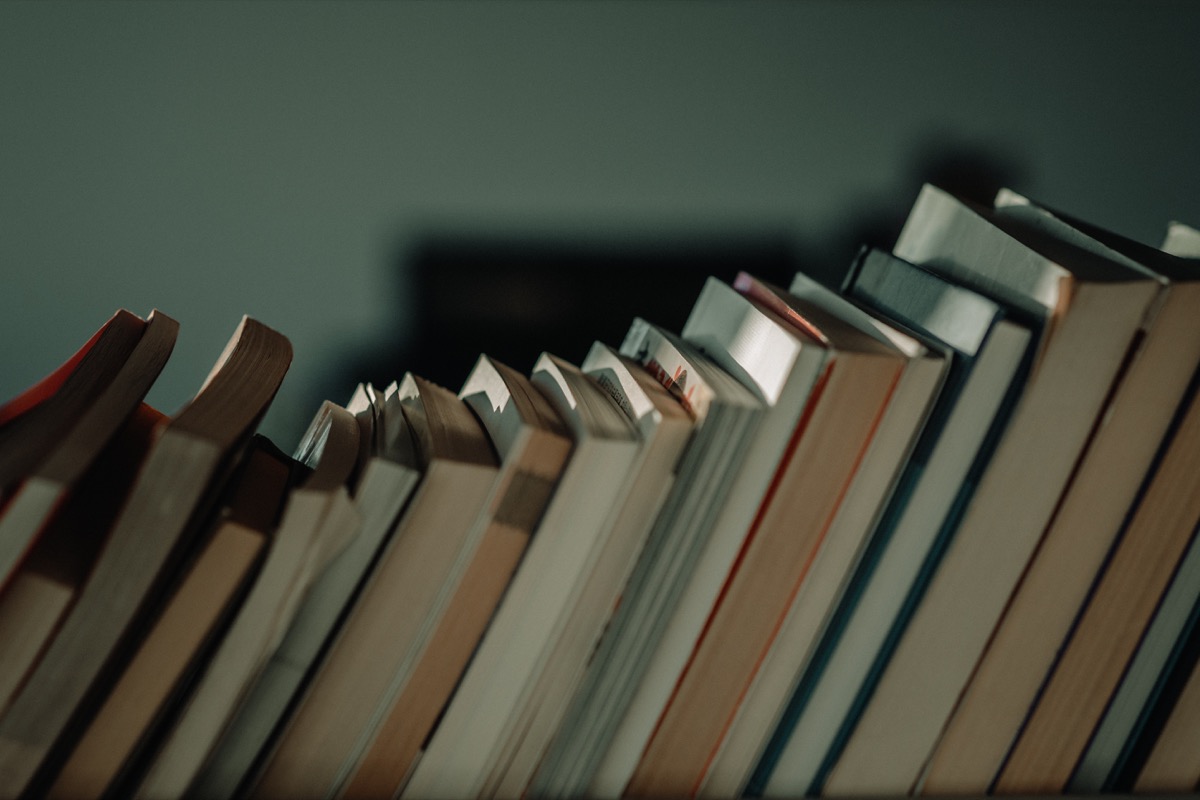
Another favorite among some online book bloggers, this method has proven controversial (or, as controversial as book organization can get). It can be the most visually appealing to some. Personally? I’ve never understood the practicality of turning every book so the spine faces in. Sure, it’s been touted as a way to make every book equal, and as a way to lessen the distraction available in a room. But if you didn’t want to be distracted by a wonderful story, why even have books in the first place?
15
Dewey Decimal System (the diehard approach)
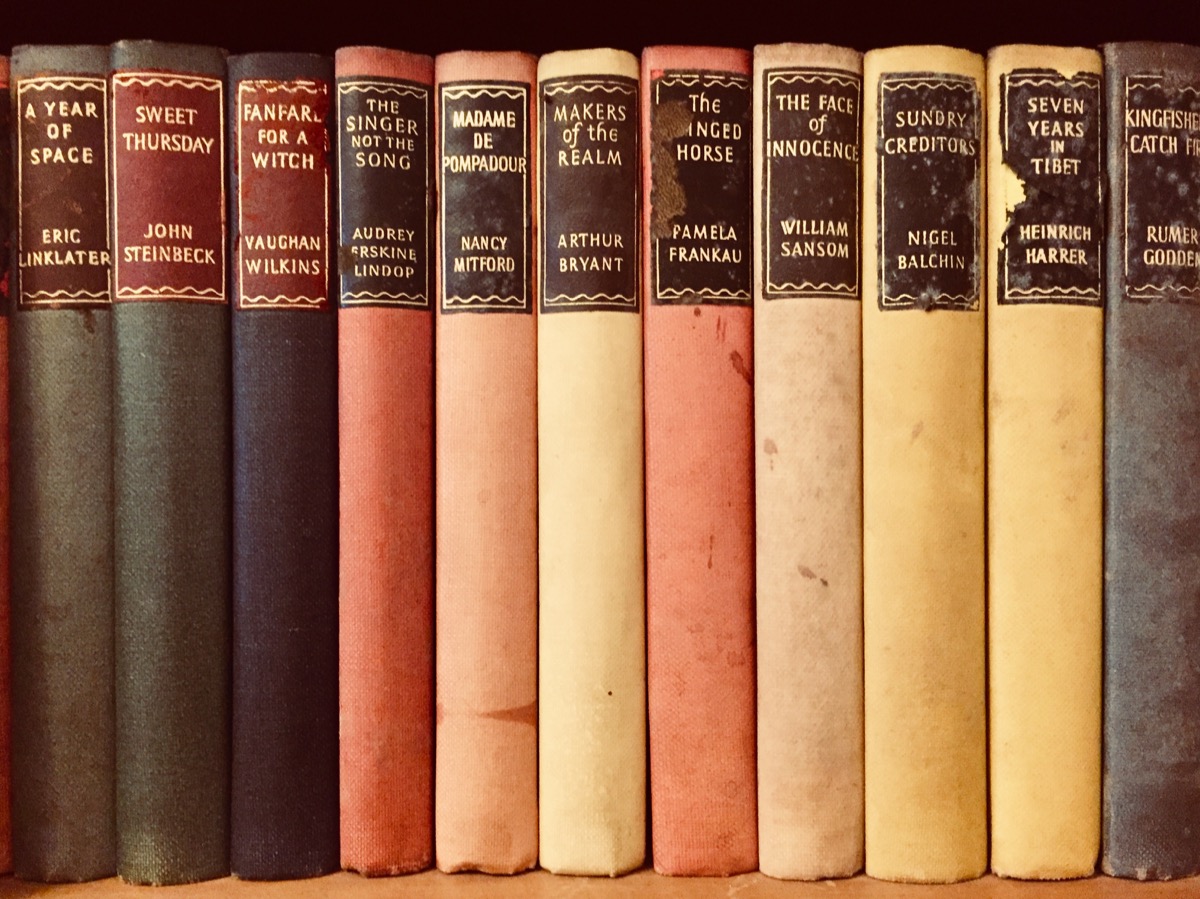
First created by Melvil Dewey in 1876, the DDS assigns topics to series of numbers, running from Class 000 (computer science, information, general works) to Class 900 (history and geography), with everything—truly, everything—in between. The beauty about this system is that it can always get more precise with decimal expansion: 822 is English drama, while 822.3 is the Elizabethan period (1558–1625), while 822.33 is specifically works by William Shakespeare, for example. Yeah, like I said, everything.
16
By whether you’ve read them or not (the best approach)

Having one shelf (or, let’s be real, three to four shelves) dedicated to the books you haven’t had a chance to read yet will not only help remind you what you have to look forward to, it’ll keep you honest. If you notice there are a handful of titles that you just never seem to get around to reading, it’s probably time to let them go, and clear space for new books to enter your life. Once you do finish a book, however, put it on a shelf that’s organized however you see fit. And for more ways to declutter, steal these 65 Genius Ways to Organize Your Life.
To discover more amazing secrets about living your best life, click here to follow us on Instagram!